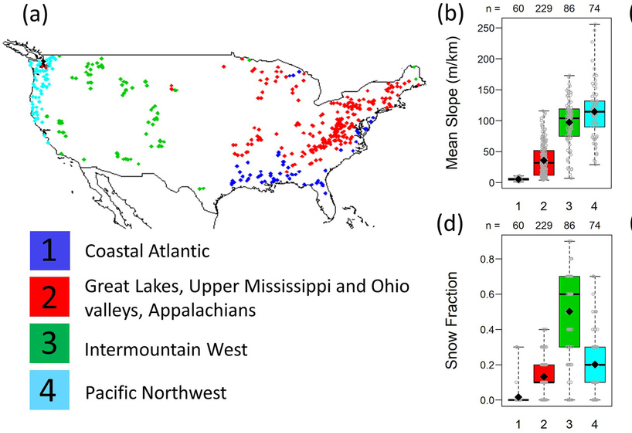An evolutionary algorithm helps bring clarity to big data sources. From a paper published in March 2023 and co-authored by many members of the Big Data Cluster.
Posted: November 28, 2025

At monitoring sites spanning various landscapes in the United States, researchers have amassed an extensive trove of data on stream water chemistry.
This data, marked by its sheer volume, diversity, and speed of collection, is a treasure trove for unraveling the intricacies of stream dynamics.
While traditional statistical methods have been the go-to tools for such analyses, the surge of interest in machine learning techniques is undeniable. These modern tools offer advantages in sifting through this deluge of data, extracting crucial features, and pinpointing trends that may have remained hidden.
For instance, in a recent study focusing on dissolved organic carbon (DOC) dynamics, scientists turned to a novel approach: an evolutionary algorithm (EA).
By applying the EA to a plethora of geological, topographical, meteorological, hydrological, and land use data, they sought to unravel the factors influencing mean stream DOC concentration in forested catchments.
The EA efficiently reduced the complexity of the dataset, uncovering the intricate interplay of factors that determined whether a catchment had high or low mean DOC levels.
"Our findings underscore the importance of critical zone structure in mediating hydrological and biogeochemical processes to govern DOC dynamics at the catchment scale," the authors write.
This multi-pronged approach, bridging patterns and processes, promises to refine understanding of DOC dynamics in forested streams across a range of landscapes.
Research such as this is part of the Cluster's ongoing effort to make big data sources more accessible and usable for future studies.


 Big Data
Big Data